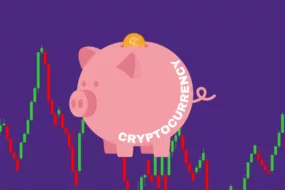
Non-Fungible Tokens (NFTs) have opened new possibilities for artists, collectors, and investors to create, trade, and own unique digital assets.
One exciting development in the world of NFTs is the emergence of NFT lending and borrowing platforms. These platforms offer new opportunities for NFT owners to unlock liquidity without selling their valuable assets and for borrowers to access capital using their NFTs as collateral.
In this comprehensive guide, we will delve into the world of NFT lending and borrowing, exploring how it works, its benefits, the associated risks, and the platforms that offer this exciting new service.
What is NFT Lending and Borrowing?
NFT lending and borrowing is a relatively new concept. Simply put, it allows you to borrow money against the value of your non-fungible tokens (NFTs).
But what are NFTs?
NFTs are digital assets that represent ownership of unique items such as art, music, or even tweets. These assets can be bought and sold on blockchain-based marketplaces using cryptocurrencies and fiat currencies.
For example, ‘Charlie Bit My Finger’ is a viral video of two brothers, which was auctioned as an NFT and sold for $760,000. The first tweet of Jack Dorsey, ex-CEO of Twitter, was sold as an NFT for $2.9 million in March 2021.
Now, imagine you have a valuable NFT that you don’t want to sell but need some cash for a short period. NFT lending and borrowing allows you to borrow money by putting your NFT up as collateral. You get the cash you need, and your NFT remains in your possession until you repay the loan.
The lender holds your NFT as collateral during the loan period and returns it to you once you have paid the loan amount plus interest. This allows you to unlock the value of your NFT without selling it.
Overall, it’s an exciting development for NFT owners who want to take advantage of their assets’ value without permanently parting with them. It’s a win-win situation for lenders and borrowers, creating a new avenue for financial transactions in digital assets.
How NFT Lending and Borrowing Works?
Below are the critical building blocks of the NFT lending and borrowing ecosystem.
1. Smart Contracts
Smart contracts are self-executing programs that run on a blockchain. They can automate the lending, borrowing, and loan repayment process.
The terms and conditions of the loan are coded into the smart contract, ensuring that they are executed automatically and without intermediaries. This makes the process more secure and efficient and reduces the risk of fraud or default.
2. Collateralization
Collateralization is putting up an asset as security for a loan.
In this case, the NFT serves as collateral. The borrower puts their NFT up as collateral, and the lender holds onto it until the loan is repaid. If the borrower fails to repay the loan, the lender can sell the NFT to recoup their losses.
3. Liquidity Provision
Liquidity provision refers to the availability of funds for lending and borrowing.
In NFT lending and borrowing, liquidity providers (LPs) provide the funds for the loans. LPs can earn interest on their funds by providing them to lending platforms that lend to borrowers. This creates a market for NFT-backed loans and helps borrowers access the necessary funds.
4. Interest Rates and Risk Management
Interest rates in NFT lending and borrowing are determined by supply and demand. The more borrowers there are, the higher the interest rates will be, and vice versa.
Lending platforms use risk management tools to assess borrowers’ creditworthiness and manage the risk of default. These tools can include credit scoring models, collateral valuation methods, and risk management algorithms.
Using these tools, lenders can ensure they lend to borrowers likely to repay the loan and manage their risk appropriately.
Benefits of NFT Lending and Borrowing
Below are the advantages of lending and borrowing NFTs.
1. Unlocking Liquidity
NFT lending and borrowing allow NFT owners to access liquidity without selling their digital assets. This means they can unlock the value of their NFTs while still retaining ownership.
This is particularly useful for NFT owners who may need funds for a short period but don’t want to give up their NFTs permanently.
2. Capitalizing on Digital Assets
NFTs are a new type of digital asset that can be used as collateral for loans.
By using NFTs as collateral, borrowers can capitalize on the value of their digital assets and access funds that may not be available through traditional lending channels. This creates a new avenue for accessing funds, particularly for those who may not have traditional collateral such as real estate or stocks.
3. Lower Interest Rates
NFT lending and borrowing platforms offer lower interest rates than traditional lending channels. This is because the loans are secured by collateral, which reduces the risk of default for the lender.
Also, blockchain technology and smart contracts can reduce administrative costs and overheads, allowing lending platforms to offer lower rates to borrowers.
4. Decentralized and Trustless
NFT lending and borrowing platforms are typically decentralized, which means they operate on a peer-to-peer basis without intermediaries such as banks or financial institutions. This creates a trustless environment where borrowers and lenders can transact directly.
Also, using smart contracts ensures that the loan terms are executed automatically and transparently, increasing trust and reducing the risk of fraud.
Top Platforms Offering NFT Lending and Borrowing
The platforms that facilitate NFT lending and borrowing include the following.
1. Aavegotchi
Aavegotchi is a decentralized finance (DeFi) platform that allows users to borrow and lend using NFTs as collateral.
Aavegotchi uses the Aave protocol, a leading DeFi protocol that supports a range of cryptocurrencies and tokens. Aavegotchi’s unique feature is the “Gotchi collateral” system, which allows users to mint their own unique NFTs to be used as collateral for loans. This creates a new way for users to access funds while retaining ownership of their NFTs.
2. NFTfi
NFTfi is a platform that allows users to borrow and lend NFTs using smart contracts.
NFTfi supports a range of NFTs, including CryptoPunks, Bored Apes, and Axies. The platform enables users to create custom loan terms, including interest rates, repayment periods, and collateral requirements.
NFTfi’s unique feature is the ability to fractionalize NFTs, which allows users to borrow and lend smaller portions of NFTs, creating more opportunities for access to liquidity.
3. NIFTEX
NIFTEX is a platform that allows users to tokenize their NFTs, creating a new type of digital asset that can be traded and used as collateral.
Users can create “Nifties” by depositing their NFTs on the platform and issuing tokens representing ownership of the NFT. These tokens can then be traded or used as collateral for loans.
NIFTEX’s unique feature is the ability to create “smart Nifties,” which automatically pay out a percentage of the NFT’s revenue to the token holders.
4. Rarible Loans
Rarible Loans is a platform that allows users to borrow and lend using NFTs as collateral. The platform supports a range of NFTs, including Rarible’s own NFTs and other popular collections such as Bored Ape Yacht Club and Art Blocks.
Rarible Loans allows users to create custom loan terms, including interest rates, repayment periods, and collateral requirements.
Risks and Considerations
Like any financial product, there are potential risks regarding NFTs.
1. Volatility and Market Risk
Like any asset, NFTs are subject to market volatility and risk.
The value of NFTs can fluctuate rapidly, and borrowers may be at risk of default if the value of their NFT collateral falls below the loan amount. Also, NFTs may not have a liquid market during bear runs, making it difficult to sell or borrow against them.
2. Smart Contract Risks
NFT lending and borrowing platforms use smart contracts to execute loans and manage collateral.
While smart contracts are designed to be secure and transparent, they are not infallible. Bugs or vulnerabilities in the code could be exploited by bad actors, leading to the loss of funds or collateral. Errors in the execution of smart contracts could also lead to unintended consequences or loss of funds.
3. Counterparty Risk
NFT lending and borrowing platforms are typically decentralized, which means users transact directly with each other without the intermediation of traditional financial institutions. This creates counterparty risk, as borrowers and lenders may not know each other and may not have a reputation for fulfilling their obligations.
4. Regulatory Risk
The regulatory landscape for NFTs is still in development, and there is uncertainty around these activities’ legal and regulatory status in many jurisdictions. This could lead to regulatory actions or regulation changes that impact the availability or use of NFT lending and borrowing platforms.
Conclusion
As the digital world continues to evolve, NFT lending and borrowing have emerged as an exciting new development. It allows NFT owners to unlock liquidity without selling their valuable assets and for borrowers to access capital using their NFTs as collateral.
However, as with any new technology, there are risks associated with NFT lending and borrowing, including market volatility, smart contract risks, counterparty risk, and regulatory uncertainty.
Nevertheless, the benefits of NFT lending and borrowing are significant, including unlocking liquidity, capitalizing on digital assets, lower interest rates, and decentralized and trustless transactions.
Going forward, it’s clear that NFT lending and borrowing will play an essential role in democratizing finance and creating a more accessible and transparent financial system.
FAQs
1. What are the benefits of NFT lending and borrowing?
NFT lending and borrowing can unlock liquidity and allow holders to capitalize on digital assets.
Borrowers can access capital without selling their NFTs. These platforms offer lower interest rates than traditional lending. The decentralized and trustless nature of NFT lending and borrowing adds an extra layer of security.
2. What are the risks of NFT lending and borrowing?
Risks associated with NFT lending and borrowing include market volatility and risk, smart contract risks, counterparty risk, and regulatory risk.
NFTs can experience rapid price fluctuations, smart contracts can contain bugs or vulnerabilities, counterparty risk can arise from transacting directly with unknown parties, and regulatory uncertainty can impact the availability and use of these platforms.
3. How do NFT lending and borrowing fit into the larger DeFi ecosystem?
NFT lending and borrowing are part of the larger DeFi ecosystem, which aims to create a decentralized financial system that is open, transparent, and accessible to everyone. These platforms use blockchain technology and smart contracts to develop trustless, decentralized lending and borrowing markets. They are part of a more significant movement toward creating a more democratic and accessible financial system.





